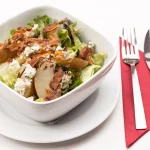The Best Fluffy Pancakes recipe you will fall in love with. Full of tips and tricks to help you make the best pancakes.
If you love citrusy desserts, this orange pound cake is the perfect treat for you! Bursting with fresh orange flavor, this cake is soft, buttery, and irresistibly moist. Made with fresh orange zest and juice, it delivers a delicious balance of sweetness and tangy citrus goodness in every bite. Whether you’re serving it for brunch, dessert, or a cozy afternoon snack, this pound cake is sure to impress. Plus, with a simple recipe and easy-to-follow steps, you’ll have a homemade citrus delight fresh from the oven in no time! Keep reading to learn how to make the ultimate orange pound cake.
The Secret to a Perfectly Moist Orange Pound Cake
Achieving the perfectly moist and flavorful orange pound cake comes down to a few key baking principles. From selecting the best oranges to ensuring the right balance of ingredients, here’s what you need to know to create a soft, buttery, and citrusy delight every time.
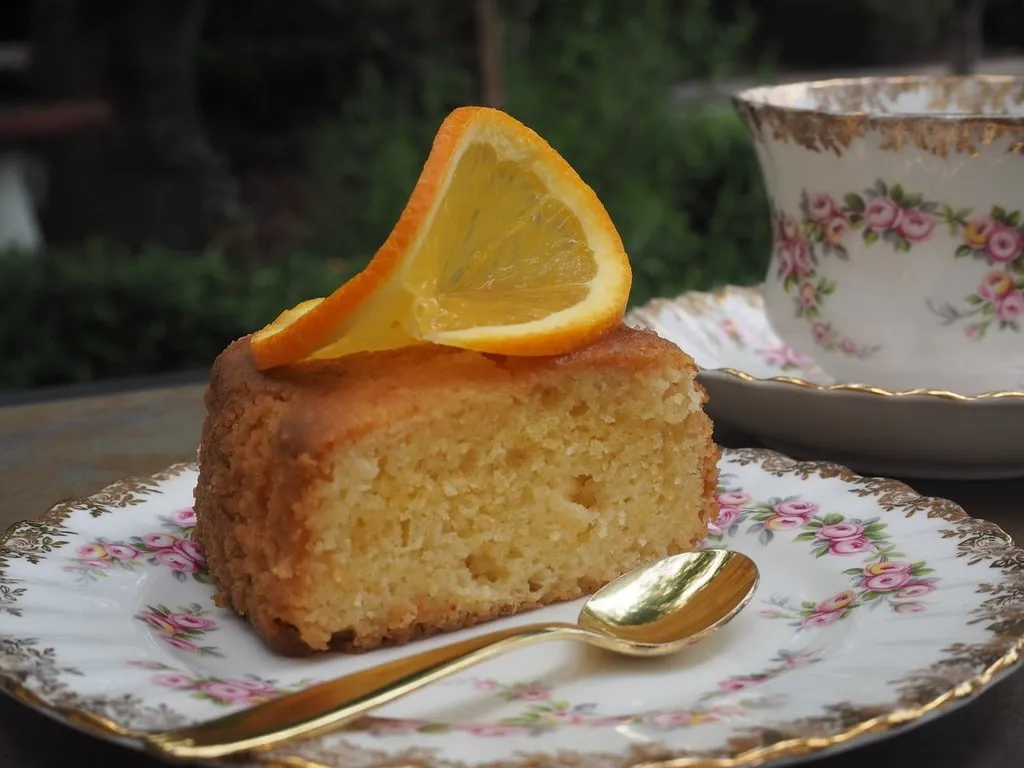
Choosing the Right Oranges for Maximum Flavor
The star ingredient in this recipe is, of course, oranges! Using fresh oranges instead of artificial flavoring makes a world of difference. Here’s what to look for:
- Best Varieties: Navel oranges, Valencia oranges, and Cara Cara oranges are great choices because they are juicy, naturally sweet, and aromatic. Blood oranges add a unique touch with their slightly tart and berry-like flavor.
- Use Fresh Orange Juice and Zest: Bottled orange juice won’t provide the same depth of flavor. Freshly squeezed orange juice enhances moisture, while zest adds concentrated citrus oils for an intense aroma.
- Pro Tip: When zesting, use a microplane grater and avoid the white pith—it’s bitter and can alter the cake’s taste.
Balancing Sweetness and Acidity for the Best Taste
A great orange pound cake should have the right balance between sweet and tangy flavors.
- Sugar Levels: Granulated sugar is ideal, but you can experiment with brown sugar for a slightly deeper, caramel-like sweetness.
- A Hint of Acidity: A splash of lemon juice or buttermilk can enhance the citrus notes while also helping with the cake’s tenderness.
- Salt for Contrast: Just a pinch of salt brings out the natural sweetness of the oranges without making the cake too sugary.
The Importance of Butter and Eggs for a Rich, Moist Texture
A classic pound cake relies on a rich combination of butter and eggs to achieve its signature dense yet moist crumb. Here’s why these ingredients are crucial:
- Butter for Moisture and Flavor: Use high-quality unsalted butter and make sure it’s at room temperature before mixing. This allows for better creaming with sugar, creating a light and fluffy texture.
- Eggs for Structure and Softness: Eggs act as a binder and help with leavening. Using room-temperature eggs ensures they mix evenly, preventing a dense cake.
- Oil for Extra Moisture: While butter provides richness, adding a small amount of vegetable oil or sour cream can help keep the cake extra moist and tender.
Mixing Techniques to Keep Your Cake Soft and Fluffy
How you mix your batter plays a big role in the final texture of your orange pound cake.
- Cream Butter and Sugar Properly: Beat butter and sugar together until the mixture is light and fluffy—this incorporates air and prevents a dense cake.
- Don’t Overmix the Batter: After adding the flour and baking powder, mix until just combined. Overmixing can lead to a tough and dry cake.
- Use the Right Flour: All-purpose flour works well, but you can also use cake flour for a lighter texture. Sift the flour before adding it to the batter to avoid lumps.
For effortless mixing and blending, a high-powered immersion blender is a must-have kitchen tool. Whether you’re preparing the batter for your orange pound cake or whipping up a smooth glaze, this tool ensures lump-free and perfectly blended ingredients. With an efficient blade system, it effortlessly purees, blends, and emulsifies with precision. The ergonomic design makes it comfortable to handle, and its detachable parts allow for easy cleaning. If you’re looking for a reliable and efficient blending tool, check it out here.
Tools and Equipment You Need for This Recipe
Having the right tools and equipment can make a huge difference when baking an orange pound cake. Using high-quality and well-prepared kitchen essentials ensures that your cake turns out moist, fluffy, and perfectly baked. Below are the must-have tools for a successful homemade citrus pound cake.
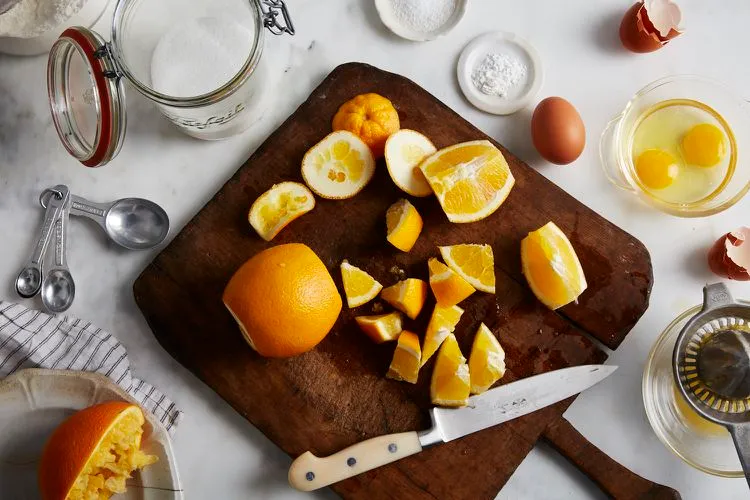
1. Mixing Essentials: Achieve a Smooth and Fluffy Batter
To create a light and airy pound cake, you’ll need the right mixing tools:
- Mixing Bowls: Use at least two large mixing bowls—one for wet ingredients and one for dry ingredients. Glass or stainless steel bowls are ideal as they don’t absorb odors or colors.
- Hand Mixer or Stand Mixer: A stand mixer with a paddle attachment or an electric hand mixer is essential for creaming butter and sugar properly. This step is key to getting a light and fluffy cake texture.
- Whisk and Spatula: A whisk helps blend ingredients smoothly, while a rubber spatula is perfect for folding ingredients gently and scraping down the sides of the bowl.
2. Baking Must-Haves: The Right Bakeware for a Perfect Cake
Choosing the right baking pan is crucial for even baking and the perfect shape.
- Loaf Pan vs. Bundt Pan:
- A 9×5-inch loaf pan is perfect for a classic pound cake shape.
- A Bundt pan adds a decorative look and ensures even baking due to its center tube.
- For a beautifully baked and visually stunning cake, the Nordic Ware Blossom Bundt Pan is an excellent choice. This metallic Bundt pan features intricate flower-shaped details, which not only makes your orange pound cake stand out but also ensures an even bake. The non-stick coating makes it easy to remove your cake without any sticking, while the durable aluminum construction guarantees long-lasting quality. Whether you’re making a classic pound cake or a unique variation, this Bundt pan adds elegance to your baking. You can purchase it on Amazon here.
- Non-Stick or Greased Pan: To prevent sticking, use a non-stick pan or grease a regular pan with butter and flour. Lining the bottom with parchment paper adds extra insurance.
- Baking Sheet (Optional): Placing your loaf pan on a baking sheet can help distribute heat evenly, reducing the chances of an over-browned bottom.
3. Zesting and Juicing Tools: Extract Maximum Citrus Flavor
Since fresh orange juice and zest are the stars of this recipe, having the right tools makes a difference.
- Microplane Zester: A fine grater or microplane zester is ideal for getting thin, fragrant orange zest without the bitter white pith.
- Citrus Juicer or Reamer: A manual citrus juicer or handheld reamer helps extract maximum juice from fresh oranges. If you don’t have one, simply squeeze the orange through a fine-mesh strainer to remove seeds and pulp.
4. Measuring Tools: Ensure Accurate Ingredient Ratios
Baking is all about precision, so using proper measuring tools is important.
- Measuring Cups and Spoons: Use dry measuring cups for flour and sugar and liquid measuring cups for orange juice and milk.
- Kitchen Scale (Optional): A digital kitchen scale ensures perfect measurements, especially when using grams for flour and sugar.
- Sifter or Fine-Mesh Strainer: Helps aerate the flour, making your cake lighter and lump-free.
5. Oven and Cooling Essentials: Bake and Cool Like a Pro
Once your cake is in the oven, the right baking temperature and cooling process ensure a perfectly moist pound cake.
- Oven Thermometer: Not all ovens are accurate! Use an oven thermometer to ensure your cake bakes at the correct temperature (typically 325°F or 350°F).
- Toothpick or Cake Tester: To check for doneness, insert a toothpick in the center—if it comes out clean, your cake is ready!
- Cooling Rack: After baking, let your cake cool in the pan for about 10-15 minutes before transferring it to a wire rack to cool completely. This prevents soggy bottoms and ensures a soft texture.
Final Tip: Prepping Your Workspace for an Easy Baking Experience
Before you start baking, gather all your ingredients and tools in one place. This saves time and prevents mistakes. Keep your butter at room temperature, preheat the oven, and measure everything in advance for a smooth and stress-free baking experience.
Step-by-Step Orange Pound Cake Recipe
Baking a homemade orange pound cake is easier than you think! By following these simple steps, you’ll create a buttery, citrus-infused cake with a perfectly soft crumb. Let’s go through each stage, from prepping the ingredients to baking and cooling the cake.
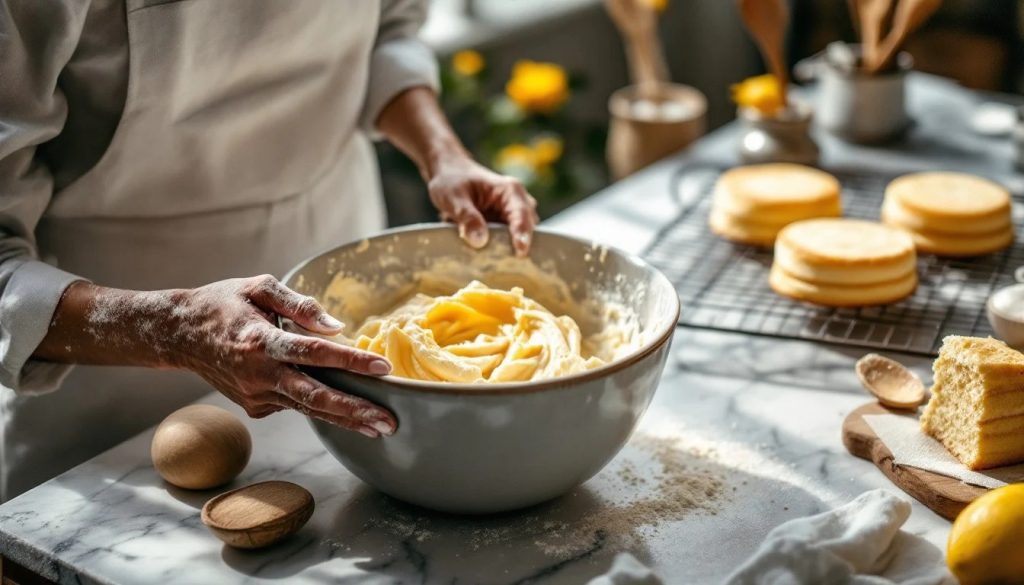
1. Preparing the Ingredients
Before you begin mixing, it’s essential to measure and prepare all ingredients for a smooth baking process.
Ingredients You’ll Need:
- 2 ½ cups (315g) all-purpose flour – Provides structure to the cake. You can also use cake flour for a lighter texture.
- 1 cup (226g) unsalted butter – Brings richness and moisture. It should be at room temperature for easier mixing.
- 2 cups (400g) granulated sugar – Adds sweetness and helps create a tender crumb.
- 4 large eggs – Act as a binder and provide moisture. Use room-temperature eggs for a smooth batter.
- ½ cup (120ml) fresh orange juice – The key to the cake’s bright, citrusy flavor.
- 2 tbsp orange zest – Intensifies the orange aroma and taste.
- 2 tsp baking powder – Helps the cake rise and become fluffy.
- ½ tsp salt – Enhances the flavors and balances sweetness.
- 1 tsp vanilla extract – Adds depth to the cake’s flavor.
- ½ cup (120ml) milk or buttermilk – Helps keep the cake moist and soft.
Pro Tip: Sift Your Dry Ingredients
To prevent lumps and achieve a light, airy texture, sift the flour, baking powder, and salt together before adding them to the batter.
2. Mixing and Combining the Batter
Once your ingredients are ready, it’s time to mix everything together. Follow these steps carefully to ensure your cake turns out soft and flavorful.
Cream the Butter and Sugar
- In a large mixing bowl, use a stand mixer with a paddle attachment or a hand mixer to beat the butter and sugar together.
- Mix on medium speed for 3-5 minutes until the mixture is light, fluffy, and pale in color. This process incorporates air, making the cake lighter.
Add the Eggs One at a Time
- Crack one room-temperature egg into the batter at a time, mixing well after each addition.
- This helps maintain the cake’s structure and prevents curdling.
Add Orange Zest and Vanilla Extract
- Stir in the fresh orange zest and vanilla extract for that extra boost of flavor.
- The zest releases natural citrus oils, intensifying the orange taste.
Step 4: Alternate Adding Dry Ingredients and Orange Juice
- Lower the mixer speed and gradually add the sifted dry ingredients, alternating with fresh orange juice and milk/buttermilk.
- Start and end with the dry ingredients to ensure smooth incorporation.
- Do not overmix—mix just until combined to keep the cake tender.
Pro Tip: Use a Rubber Spatula to Fold the Batter
- Scrape the sides and bottom of the bowl with a spatula to make sure everything is well mixed.
- Avoid overworking the batter, as this can result in a dense cake.
3. Pouring and Baking the Cake
Now that your batter is ready, it’s time to transfer it to the baking pan and bake your cake to perfection.
Prepare the Baking Pan
- Grease a 9×5-inch loaf pan or a Bundt pan with butter and flour or use non-stick baking spray.
- For extra protection, line the bottom with parchment paper to prevent sticking.
Pour and Smooth the Batter
- Pour the batter into the prepared pan and use a spatula to smooth the top evenly.
- Tap the pan gently on the counter to remove any air bubbles.
Bake at the Right Temperature
- Preheat the oven to 325°F (163°C) and place the cake in the center rack.
- Bake for 50-60 minutes, depending on the pan size.
- The cake is done when a toothpick inserted into the center comes out clean.
Pro Tip: Cover with Foil if Browning Too Quickly
If you notice the top browning too fast while baking, loosely cover it with aluminum foil to prevent over-browning while allowing the inside to continue cooking.
4. Cooling and Removing from the Pan
Cooling your cake properly is just as important as baking it. Follow these steps to ensure a perfect texture and easy removal from the pan.
Let the Cake Cool in the Pan
- Once baked, let the cake rest in the pan for about 10-15 minutes before removing it.
- This allows the cake to set and makes it easier to release from the pan.
Transfer to a Cooling Rack
- Carefully run a knife around the edges of the cake to loosen it.
- Turn the cake onto a wire cooling rack and let it cool completely for at least 30 minutes before slicing.
Optional Orange Glaze for Extra Flavor
- If you want an extra citrusy kick, prepare a simple orange glaze using powdered sugar, fresh orange juice, and a splash of vanilla.
- Drizzle over the cooled cake for a sweet, glossy finish.
5. Final Touches and Serving the Cake
Once your cake is completely cooled, it’s time to slice and enjoy!
Serving Suggestions:
- Serve with a cup of tea, coffee, or fresh orange juice for a delightful pairing.
- Add a dollop of whipped cream or a scoop of vanilla ice cream for extra indulgence.
- Garnish with fresh orange slices, mint leaves, or powdered sugar for a beautiful presentation.
Variations to Try for a Unique Twist
While a classic orange pound cake is already a delightful treat, there are plenty of ways to enhance, modify, or experiment with the recipe to create new and exciting flavors. Whether you want a nutty crunch, a chocolatey swirl, or a dairy-free version, these variations will help you personalize your cake while keeping the citrusy goodness intact.
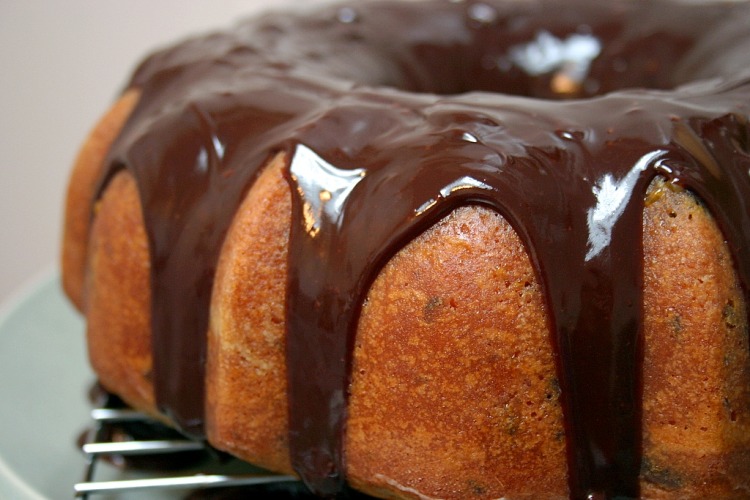
1. Chocolate Orange Pound Cake
Chocolate and orange are a heavenly combination—rich, deep cocoa flavors complement the brightness of fresh orange zest.
How to Make It:
- Add cocoa powder: Replace ¼ cup of flour with ¼ cup of unsweetened cocoa powder to create a subtle chocolate base.
- Mix in chocolate chips: Fold in ½ cup of dark or semi-sweet chocolate chips into the batter for gooey bites of chocolate.
- Drizzle with chocolate glaze: Instead of an orange glaze, melt dark chocolate and drizzle it over the cooled cake for an elegant finish.
If you love the chocolate-orange pairing, you might also enjoy this Chocolate Orange Almond Cake, a simple yet luxurious bake!
Best For:
Chocolate lovers who enjoy a balance between citrus and rich cocoa flavors.
2. Almond Orange Pound Cake
Adding nuts to your cake creates a delightful crunch and a nutty aroma that pairs beautifully with orange.
How to Make It:
- Use almond flour: Replace ¼ cup of all-purpose flour with almond flour for a moist and slightly dense texture.
- Add chopped nuts: Fold in ½ cup of chopped toasted almonds or pecans for a satisfying crunch.
- Enhance with almond extract: Add ½ teaspoon of almond extract alongside vanilla to boost the nutty flavor.
- Top with slivered almonds: Sprinkle slivered almonds on top of the batter before baking for a decorative and crunchy finish.
Best For:
Those who love nutty, fragrant flavors in their baked goods.
3. Coconut Orange Pound Cake
This variation adds a tropical touch to your orange pound cake, making it perfect for summer gatherings.
How to Make It:
- Use coconut milk: Replace regular milk or buttermilk with full-fat coconut milk for a creamy, tropical flavor.
- Mix in shredded coconut: Add ½ cup of sweetened shredded coconut into the batter for extra texture.
- Top with toasted coconut: After baking, sprinkle the cake with toasted coconut flakes for a crunchy and aromatic finish.
Best For:
Fans of tropical flavors who love a balance between citrus and coconut sweetness.
4. Orange Cranberry Pound Cake
This variation adds tart cranberries, making it an excellent holiday treat with bursts of fruity goodness.
How to Make It:
- Use fresh or dried cranberries: Fold in ½ cup of fresh or dried cranberries for a tart contrast to the sweet orange flavor.
- Soak dried cranberries: If using dried cranberries, soak them in orange juice for 15 minutes to plump them up and enhance their flavor.
- Glaze with orange-cranberry icing: Mix powdered sugar, orange juice, and a bit of cranberry juice for a festive drizzle.
Best For:
A holiday-inspired dessert that combines sweet and tart flavors beautifully.
5. Dairy-Free Orange Pound Cake
This variation is perfect for those with lactose intolerance or who follow a dairy-free diet while still delivering a moist and flavorful cake.
How to Make It:
- Swap butter for coconut oil or vegan butter: Use ½ cup of melted coconut oil or dairy-free butter instead of regular butter.
- Use plant-based milk: Replace regular milk with almond, oat, or coconut milk for a smooth texture.
- Check your chocolate (if adding): If using chocolate, make sure it’s dairy-free or vegan-friendly.
Best For:
Those who avoid dairy but still want a moist and delicious orange pound cake.
6. Orange Honey Pound Cake
If you love natural sweetness and want to avoid refined sugar, this version is sweetened with honey for a deep, floral flavor.
How to Make It:
- Replace sugar with honey: Use ¾ cup of honey instead of 1 cup of granulated sugar (since honey is sweeter, you need less).
- Reduce the baking temperature: Bake at 315°F (157°C) instead of 325°F (163°C) since honey caramelizes faster.
- Pair with Greek yogurt: Serve slices with a dollop of Greek yogurt and a drizzle of honey for a wholesome dessert.
Best For:
Those who prefer natural sweeteners and a slightly denser, moist cake.
7. Spiced Orange Pound Cake
Adding warm spices like cinnamon, nutmeg, or cardamom gives your cake a cozy, aromatic flavor that’s great for fall or winter.
How to Make It:
- Add warm spices: Mix 1 teaspoon of cinnamon, ½ teaspoon of nutmeg, and ¼ teaspoon of ground cardamom into the dry ingredients.
- Use brown sugar: Replace ½ cup of granulated sugar with ½ cup of brown sugar for a hint of caramel flavor.
- Drizzle with spiced glaze: Make a glaze with powdered sugar, orange juice, and a dash of cinnamon for an extra warming touch.
Best For:
A fall or winter-inspired dessert with warm and cozy flavors.
Serving Suggestions and Pairings
An orange pound cake is delicious on its own, but pairing it with the right accompaniments can elevate its flavor, texture, and presentation. Whether you’re serving it for breakfast, dessert, or a special occasion, these serving ideas and pairings will help you make the most of your cake.
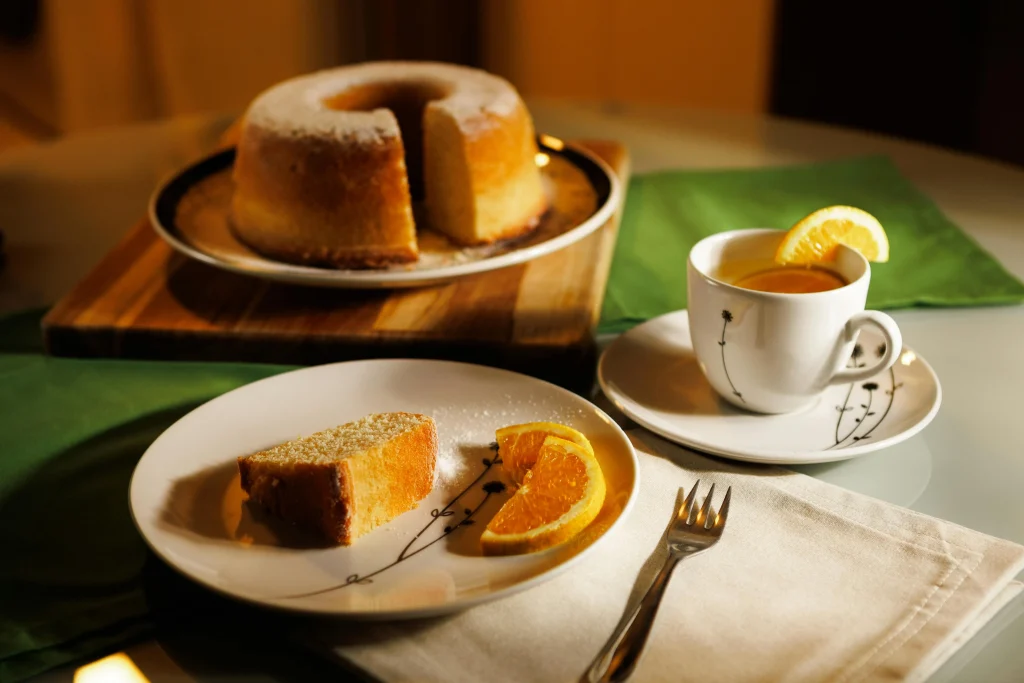
1. Classic and Simple Serving Ideas
If you prefer to let the citrus flavors shine, serve your orange pound cake as is or with a light dusting of powdered sugar for an elegant touch. Here are some simple serving ideas:
- Warm slices slightly before serving to enhance the buttery aroma.
- Lightly dust with powdered sugar for a classic, bakery-style look.
- Serve with a dollop of whipped cream for a creamy contrast.
- Toast slices in a pan with butter for a caramelized, slightly crispy exterior.
Best For: A quick and simple dessert or snack with minimal effort.
2. Citrus-Infused Glazes and Toppings
Enhance the citrus flavor by adding orange-inspired glazes or toppings to your cake. These options will create a more decadent, restaurant-quality experience:
- Orange glaze: Drizzle a mixture of powdered sugar, fresh orange juice, and zest over the top for a bright, tangy finish.
- Cream cheese frosting: Spread a rich, tangy cream cheese frosting infused with orange zest for extra indulgence.
- Candied orange slices: Decorate with thinly sliced candied oranges for a professional touch.
- Caramel drizzle: Drizzle warm caramel sauce for a sweet and buttery contrast.
Best For: Those who love extra sweetness and a visually stunning presentation.
3. Fresh Fruit Pairings
The zesty, citrusy notes of orange pound cake pair beautifully with fresh fruit, creating a refreshing balance of flavors. Some great pairings include:
- Berries: Serve with fresh strawberries, raspberries, blueberries, or blackberries for a bright, tart contrast.
- Tropical fruits: Pair with pineapple, mango, or passion fruit for a tropical twist.
- Citrus medley: Serve with slices of grapefruit, mandarin oranges, or blood oranges for a citrus explosion.
- Fruit compote: Make a quick berry or peach compote by simmering fresh fruit with a little sugar and lemon juice.
Best For: A light and refreshing dessert with natural sweetness.
4. Ice Cream and Gelato Pairings
A slice of warm orange pound cake with a scoop of cold, creamy ice cream creates a perfect contrast of textures and temperatures. Some ice cream flavors that pair well with orange pound cake include:
- Vanilla bean – A classic pairing that complements the citrusy notes.
- Chocolate fudge – The richness of chocolate balances the bright orange flavors.
- Coconut – Adds a tropical touch to your cake.
- Honey or caramel swirl – Enhances the cake’s sweetness with warm undertones.
Best For: A comforting dessert that’s simple yet indulgent.
5. Beverage Pairings
Pairing your orange pound cake with the right drink can enhance its flavor and create an even more delightful experience. Here are some perfect beverage pairings:
Hot Drinks
- Coffee (black or with cream) – Balances the sweetness of the cake.
- Espresso or cappuccino – The boldness of coffee complements the citrus notes.
- Earl Grey tea – The bergamot flavor enhances the orange zest.
- Chai latte – Spiced teas pair well with the cake’s buttery texture.
Cold Drinks
- Fresh orange juice – A citrus lover’s dream pairing.
- Iced matcha latte – The earthiness of matcha balances the cake’s sweetness.
- Homemade lemonade – A tart and refreshing contrast.
Alcoholic Pairings
- Sparkling wine (Prosecco or Champagne) – The light bubbles enhance the citrus flavors.
- Mimosa (orange juice + Champagne) – A perfect brunch pairing.
- Sweet dessert wine – Such as Riesling or Moscato for an elegant finish.
- Orange liqueur cocktail – Try a Grand Marnier or Cointreau cocktail to match the cake’s flavor.
Best For: A brunch, afternoon tea, or a fancy dinner party.
6. Creative Dessert Transformations
Want to take your orange pound cake to the next level? Try repurposing it into different desserts for variety:
- Orange pound cake trifle – Layer cake slices with whipped cream and berries in a glass for an elegant dessert.
- French toast-style pound cake – Dip slices in an egg and milk mixture and pan-fry for a rich, buttery breakfast.
- Pound cake bread pudding – Cube the cake and bake it in a custard mixture for a decadent dessert.
- Ice cream sandwich – Slice the cake and place a scoop of ice cream in between for a unique twist.
Best For: Those who love creative ways to enjoy desserts.





